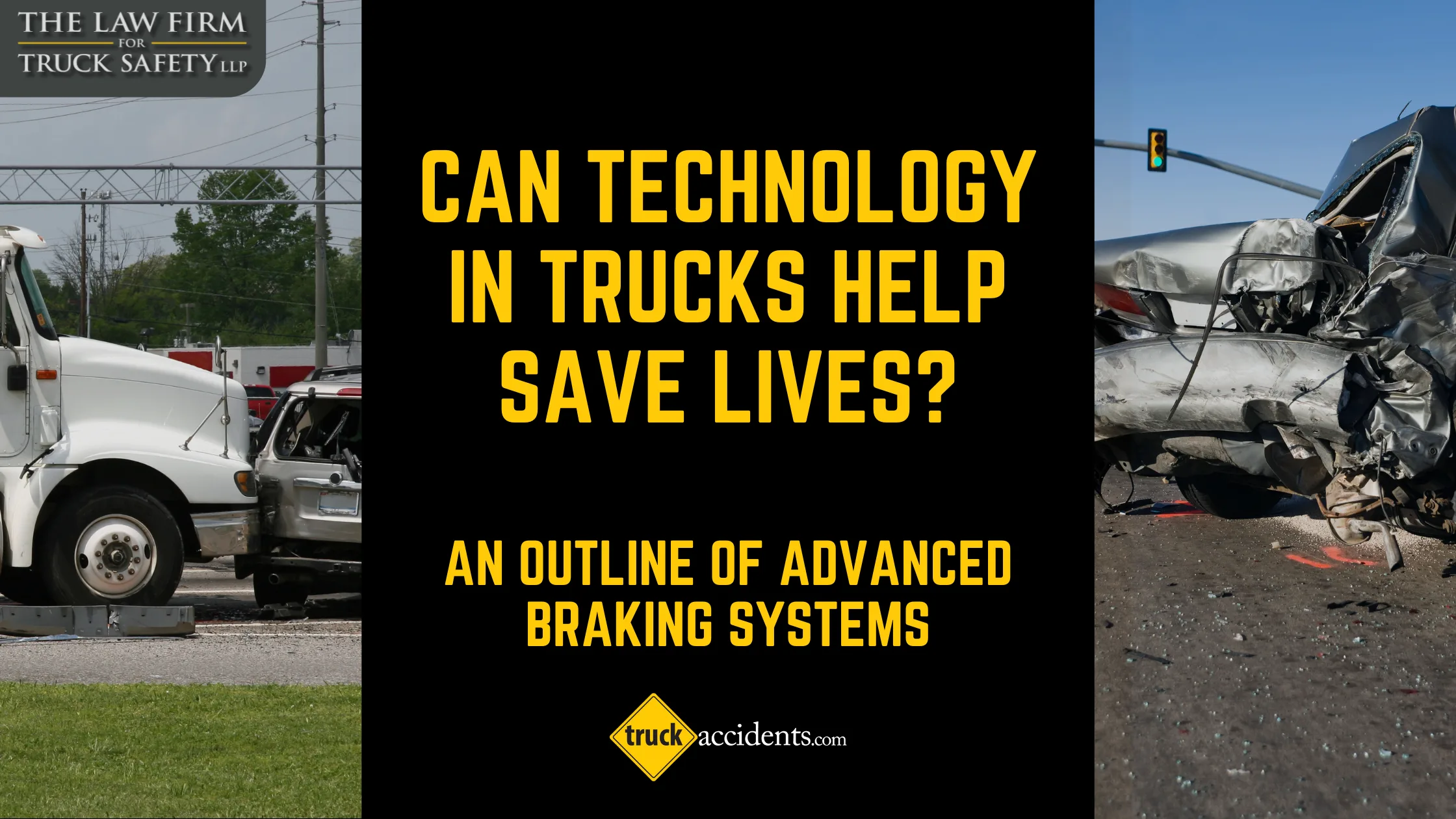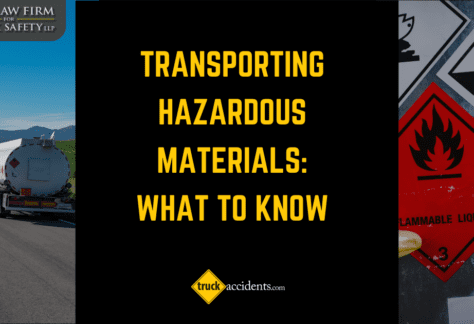Imagine this: It's a busy highway on a rainy afternoon. An 18-wheeler thunders down the road, carrying a full load.
Suddenly, traffic ahead comes to an abrupt halt. The truck driver’s heart races. He was reading a text message and following your car too closely. He is distracted. He looks up and...
What happens next?
In many cases, this scenario ends in tragedy, but in others, technology offers a lifeline.
Imagine this: It's a busy highway on a rainy afternoon. An 18-wheeler thunders down the road, carrying a full load...

Suddenly, traffic ahead comes to an abrupt halt. The truck driver’s heart races. He was reading a text message and following your car too closely. He is distracted. He looks up and...
What happens next? In many cases, this scenario ends in tragedy, but in others, technology offers a lifeline.
If equipped, a truck's automatic emergency braking (AEB) system will spring into action in this scenario. In a fraction of a second, AEB:
- Detects the stopped vehicles ahead
- Calculates the truck's speed and weight
- Determines the exact braking force needed
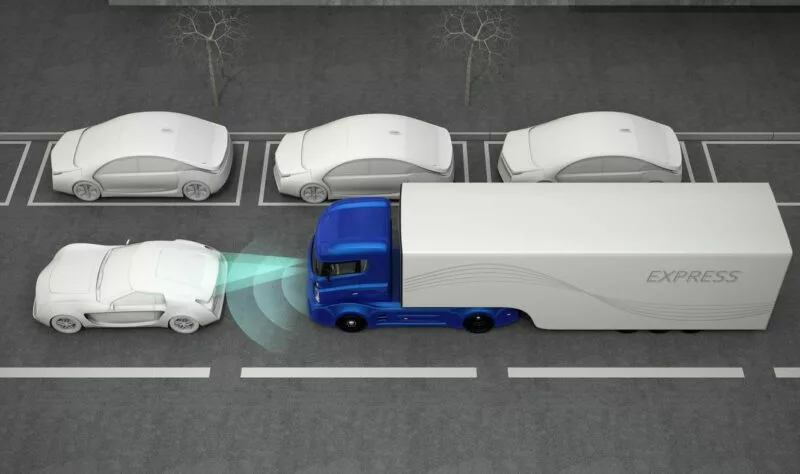
With precision that no human could match, the system then applies the brakes.
The truck slows rapidly, minimizing the impact of the crash, saving your life in the process.
Referrals & Co-Counsel
Involved in a Crash?
No other law firm knows trucks quite like us. Our trucking law expertise and trial experience allow us to win multi-million-dollar results year after year.
Our team of truck accident attorneys works tirelessly to help your family find justice in the wake of a catastrophic truck crash.
Referrals & Co-Counsel
No other law firm knows trucks quite like us. Our trucking law expertise and trial experience allow us to win multi-million-dollar results year after year.
Involved in a Crash?
Our team of truck accident attorneys works tirelessly to help your family find justice in the wake of a catastrophic truck crash.
The roads we travel on daily are shared by vehicles of all sizes, from compact cars to massive commercial trucks. Among these, tractor-trailers and heavy-duty trucks pose significant challenges to road safety due to their sheer size and weight.

As the trucking industry evolves, so does the technology that keeps drivers and other road users safe. Advanced driver assistance systems, including automatic braking and emergency braking features, are becoming increasingly common in commercial vehicles.
For car drivers and safety advocates alike, understanding these developments is crucial for navigating our shared roadways more safely and confidently.
The Need for Advanced Braking Technology in Trucks
There's an urgent need for advanced braking technology.
According to recent insights from Forbes:
- In 2021, 523,796 large truck accidents occurred across the United States, a significant increase from 415,444 incidents in 2020.
- Of those 2020 crashes, 101,000 truck crashes caused injuries, and 4,444 led to fatalities
- Speeding was a factor in 7.3% of these fatal large truck accidents -- the most common driver-related cause of crashes.
- Driver impairment and inattention each accounted for 5.2% of deadly collisions involving large trucks.
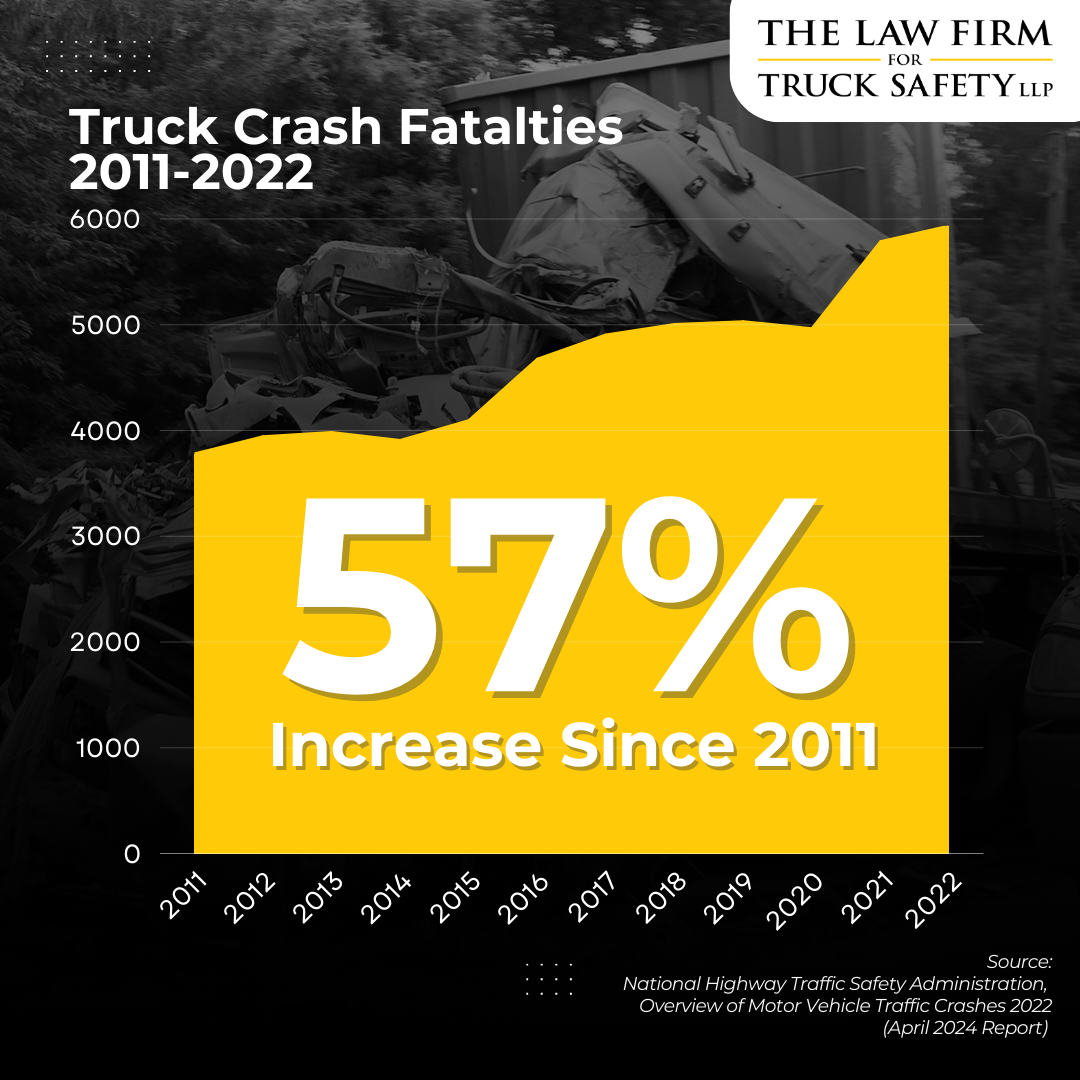
The introduction of automatic emergency braking (AEB) systems has shown promising results in reducing rear-end collisions.
As the trucking industry continues to evolve, integrating advanced braking technologies will enhance road safety for all users.
These Stats Are Real People
Watch one survivor's story to understand the difference automatic emergency braking systems make.
Advanced Braking Technologies in Commercial Trucks
Automatic Emergency Braking (AEB) is a cutting-edge safety technology that uses cameras, radar, or other sensors to monitor the road ahead. When the system detects a potential collision, it automatically applies the brakes if the driver fails to respond.
The implementation of AEB in commercial trucks has had a significant impact on road safety. A study involving over 12,500 trucks concluded that AEB could prevent more than 5,000 crashes and 50 deaths annually.
This technology has proven especially effective in reducing the severity of impacts, with speed reductions of more than 50% observed between the automatic braking and the impact.
Other Key Technologies
Electronic Stability Control (ESC) uses computer-controlled braking of individual wheels to help drivers maintain control in critical situations. It helps prevent rollovers and skidding, which are common risks for large trucks.
Adaptive Cruise Control and Air Disk Brakes further enhance truck safety. These technologies work in conjunction with AEB and ESC to improve overall vehicle control and reduce the likelihood of accidents.

As these advanced braking technologies become more widespread in commercial trucks, they will continue to significantly improve road safety for all users.
The Impact on Truck and Road Safety
A recent study from the International Journal of Environmental Research and Public Health has demonstrated that AEB can reduce rear-end collisions by 25%-50%.
The effectiveness of AEB in preventing pedestrian fatalities and injuries due to front-impact collisions is estimated at 44% and 33%, respectively.
The benefits of advanced braking systems extend to all road users:
- For truck drivers AEB significantly improves vehicle safety by reducing the risk of rear-end collisions, which are among the most common types of accidents.
- Pedestrians and other vulnerable road users also benefit from these systems, as they help minimize the severity of impacts in unavoidable collisions.
- Even in cases where accidents cannot be prevented entirely, AEB can reduce the force of impact, potentially saving lives and reducing injury severity.

By constantly monitoring the road and automatically applying brakes when necessary, these systems help address issues such as:
- Speeding
- Distracted driving
- Truck driver fatigue
- Tailgating
The rapid response of AEB in releasing and reapplying brake pressure ensures that trucks can stop quickly, even if the driver reacts late.
A Timeline of Braking Technology
Early 20th-century air brakes were a significant improvement over mechanical systems, but still struggled with the longer stopping distances and risk of jackknifing that is inherent to large trucks.
The introduction of anti-lock braking systems (ABS)Anti-lock braking systems are designed to help the driver maintain steering control and avoid skidding, jackknifing and trailer swing-out during an emergency braking system. ABS works by sensing when a wheel is about to lock up and momentarily releasing brake pressure to allow the wheel to keep rolling. in the 1980s and electronic stability control (ESC)Electronic Stability Control (ESC) systems are designed to reduce untripped rollovers and mitigate severe understeer or oversteer conditions that lead to loss of control by using automatic computer-controlled braking and reducing engine torque output. in the late 1990s dramatically enhanced truck safety by preventing wheel lock-ups and rollovers.
Today's advanced driver assistance systems (ADAS)Advanced Driver Assistance Systems (ADAS) are designed to help drivers with certain driving tasks (e.g., staying in the lane, parking, avoiding crashes, reducing blind spots, and maintaining a safe headway). They are designed generally to improve safety or reduce the workload on the vehicle driver. further mitigate risks associated with driver fatigue and sudden obstacles, while telematics enable proactive maintenance.
Despite these technological advancements and the proof that these advanced safety features are saving lives, not all trucks on the road are equipped with comprehensive braking technology. And even if this technology is installed, there’s no guarantee it is functional.
A Timeline of Braking Technology
Early 20th-century air brakes were a significant improvement over mechanical systems, but still struggled with the longer stopping distances and risk of jackknifing that is inherent to large trucks.
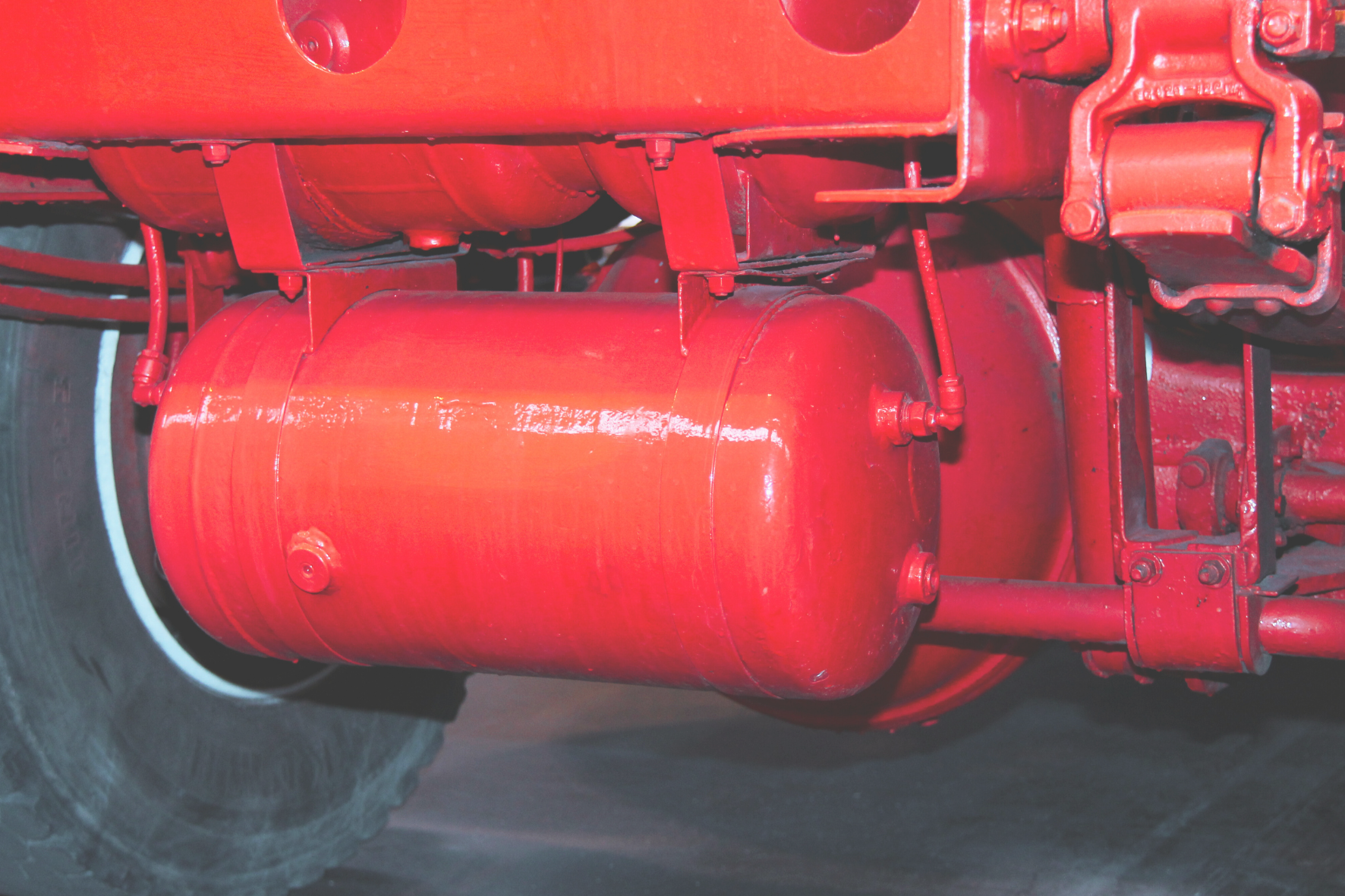
The introduction of anti-lock braking systems (ABS) in the 1980s and electronic stability control (ESC) in the late 1990s dramatically enhanced truck safety by preventing wheel lock-ups and rollovers.
Today's advanced driver assistance systems (ADAS) further mitigate risks associated with driver fatigue and sudden obstacles, while telematics enable proactive maintenance.
Despite these technological advancements and the proof that these advanced safety features are saving lives, not all trucks on the road are equipped with comprehensive braking technology. And even if this technology is installed, there’s no guarantee it is functional.

Crash. Not Accident.
The word “accident” is often used to describe devastating truck crashes. Many people in need of legal help will search for a “truck accident lawyer near me” or the “best truck accident attorney”. We even use "accident" in our site name.
However, most truck “accidents” are not accidents at all.
Truck crashes are often caused by distracted, fatigued, poorly trained, or downright dangerous truck drivers and/or the unsafe business practices of the trucking companies and brokers that hired them. Every semi-truck accident lawyer at The Law Firm for Truck Safety is committed to helping those who have been irreparably harmed in commercial vehicle crashes and providing education to the public that crashes are not accidents.
What Car Drivers Should Know
Car drivers should be aware that modern trucks are equipped with advanced braking systems. These include the Automatic Emergency Braking (AEB) and Anti-lock Brake Systems (ABS) we mentioned earlier.
ABS helps maintain steering control during hard braking, allowing drivers to avoid obstacles. Recognizing trucks with these systems can help you anticipate their behavior on the road. But just because these technologies are installed on semis, doesn’t guarantee that they will function correctly. Like any other part of a tractor-trailer, these safety features must be maintained and tested regularly to ensure they will work properly, if and when the time comes.
What Car Drivers Should Know
Car drivers should be aware that modern trucks are equipped with advanced braking systems. These include the Automatic Emergency Braking (AEB) and Anti-lock Brake Systems (ABS) we mentioned earlier.
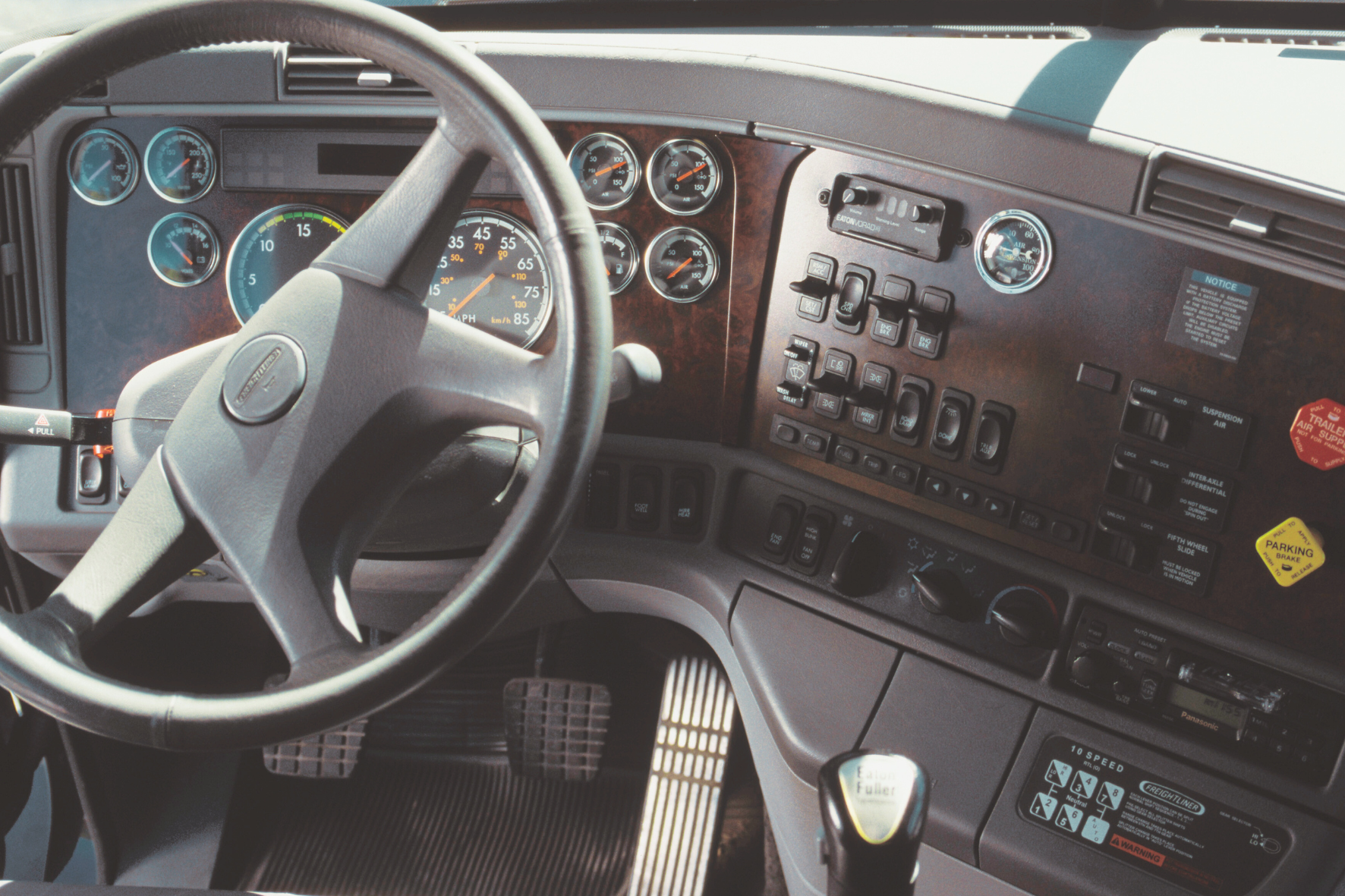
ABS helps maintain steering control during hard braking, allowing drivers to avoid obstacles. Recognizing trucks with these systems can help you anticipate their behavior on the road. But just because these technologies are installed on semis, doesn’t guarantee that they will function correctly. Like any other part of a tractor-trailer, these safety features must be maintained and tested regularly to ensure they will work properly, if and when the time comes.
Let's debunk some common myths about truck braking capabilities.
Myth:
Trucks have more powerful brakes, so they can stop faster than cars.
Reality:
While trucks do have powerful air brake systems, their significantly greater mass means they still require much more distance to come to a complete stop.
Myth:
Empty trucks can stop faster than loaded ones.
Reality:
This is a common misconception. An empty truck may actually have less traction and take longer to stop than a fully loaded one, especially on slippery roads. The weight distribution and suspension characteristics of an empty truck can lead to wheel bounce and reduced braking efficiency.
The Future of Truck Safety
Today, Advanced Driver Assistance Systems (ADAS) are becoming more sophisticated, with features like lane departure warnings and adaptive cruise control enhancing safety. Autonomous trucks are also on the horizon, promising to reduce human error and improve efficiency. These innovations have the potential to reduce accidents and save lives on the roads.
Human Skill Will Always Be Paramount
While ADAS technologies have been proven to save lives, they alone will never be able to prevent all truck accidents. Only well-trained truck drivers and safety-conscious trucking companies can do that, at least as the technology exists today.
The mentality that technology is a “magic bullet” to end traffic violence poses a significant challenge for the trucking industry. Companies must navigate the integration of new technologies while maintaining the expertise of experienced drivers.
This isn’t a challenge because it’s not possible, but rather because many companies see technology as a means to cut corners on other areas of safety including driver training.
Even though technology can go a long way in safeguarding against the safety gaps caused by human error, technology should never be viewed as a substitute for a truck driver, but rather a supplement to their training and skills.
Even still, there will always be a learning curve for the trucking industry. As technology evolves, so too do the training programs designed to help semi-truck drivers adapt to new systems, ensuring they can work effectively alongside advanced technologies.
Advanced Braking Technologies Create Safer Roads for All of Us
The trucking industry has made remarkable progress in enhancing road safety through the adoption of advanced technologies like Automatic Emergency Braking and Electronic Stability Control.
These innovations have effectively addressed critical issues such as speeding and distracted driving, leading to a significant reduction in rear-end collisions and an overall improvement in the industry's safety record. The positive impact extends beyond truck drivers to car drivers.
Beneficiaries of these safety advancements include:
Truck drivers | Car drivers | Pedestrians | Other vulnerable road users

However, it's essential to recognize that technology is just one component needed to eliminate fatal truck crashes from our roads.
The ongoing need for skilled human drivers and responsible driving practices remains crucial. Moving forward, it's imperative that all road users contribute to preventing truck accidents and fostering a safer road environment, acknowledging that safety is a collective responsibility we all share. Let's all do our part to prevent truck accidents and create safer roads for everyone.
About The Law Firm For Truck Safety
At The Law Firm for Truck Safety, it is our mission to restore hope to those who have had it ripped from them in the wake of a catastrophic truck crash.
With over half a billion dollars recovered for our clients, we take pride in our team of dedicated attorneys, including Michael Leizerman, Joe Ervin, Matthew Wright and Andy Young.

Together, we have:
- Successfully prosecuted over 100 trucking cases with results exceeding $1 million each.
- Challenged more than 300 trucking companies and other key players in the transportation industry.
- Secured landmark verdicts, including a $42.4 million award for a brain injury and paralysis case, and a $16 million wrongful death consortium verdict.
- Our truck accident attorneys possess deep knowledge of trucking laws and semi-truck safety, providing focused representation for victims.
Their extensive experience in trucking law and trial advocacy allows them to:
- Hold all negligent parties fully accountable
- Maximize compensation for our clients
- Bring about meaningful change in the trucking industry
If you're seeking justice after a truck crash, our team has the experience, commitment, and proven results to guide you through this challenging time.
At The Law Firm for Truck Safety, we're not just fighting for compensation—we're fighting for you, your future, and the safety of all road users.
Contact us to receive a free, confidential, no-obligation case review.

